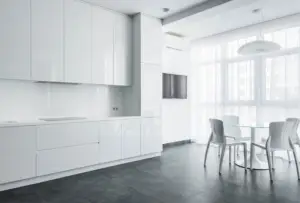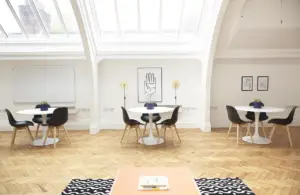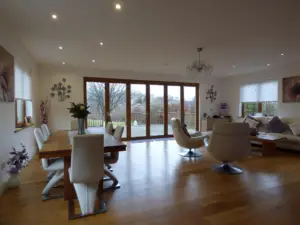By George House/30,July,2025
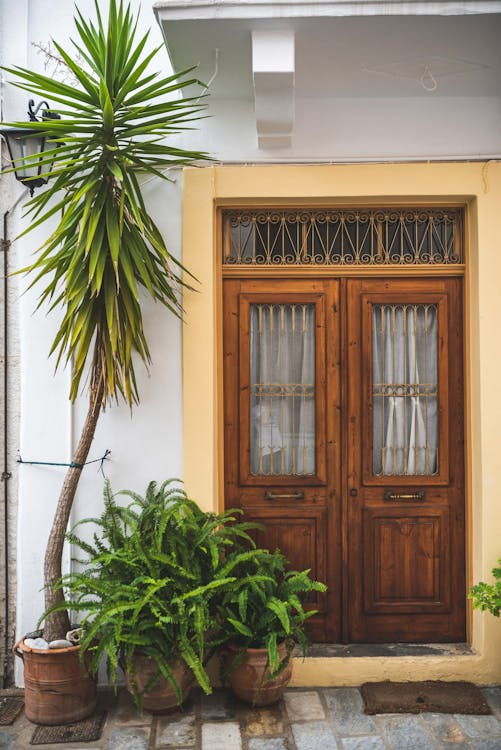
(Source)
Every home has a face, and that face starts at the front door. It’s the first thing visitors see and the last thing you lock behind you. A 36×80 exterior door gives you just enough width to carry in groceries, welcome guests, and protect your home from the elements.
It’s more than just a panel of wood or steel; it’s a barrier, a statement, and a piece of your daily rhythm. Choosing the right exterior door 36×80 might feel like a chore, but with a little guidance, it doesn’t have to be. Let’s explore what really matters.
What Does 36×80 Mean, Anyway?
You’ve likely seen numbers like 36×80 pop up while browsing home improvement catalogs. But what do they mean? Here is what you need to know:
- 36 inches refers to the door’s width.
- 80 inches refers to the height.
These measurements are industry-standard for exterior doors in residential properties. According to the U.S. Department of Energy, doors and windows account for up to 30% of total heat loss in a typical house.
That’s why fit matters. A properly sized door, like a 36×80 exterior door, helps keep out drafts, reduce noise, and increase your energy efficiency.
Why the Standard Size Works for Most Homes
The 36-inch front door width makes it easy to move furniture or appliances. It also provides enough space for accessibility needs, such as wheelchair entry. The 80-inch height gives a natural proportion that fits most ceilings and architectural designs without alterations.
According to the National Association of Home Builders (NAHB), over 67% of newly constructed homes use a standard 36×80 exterior door size. Deviating from this norm usually means more construction, more time, and more cost.
Types of Materials to Consider
Different homes and climates require different materials for your exterior doors. They offer you different functionalities. Let’s look at some common choices.
Wood
Wood doors offer a warm, natural appearance. They’re heavy and strong but might need sealing or staining every couple of years.
Steel
Steel is a practical choice. It resists warping and cracking and provides solid security. A 36×80 steel door also has a higher resale value than most wood alternatives.
Fiberglass
These doors are low-maintenance. They can mimic the look of wood while resisting moisture and weather damage. A 36×80 fiberglass door can be a good option for humid or coastal areas.
Energy Efficiency and Your Exterior Door
Energy performance is often overlooked. The wrong door can let in cold or heat and drive up utility bills. Energy Star reports that replacing older doors with energy-efficient models can save up to 13% on heating and cooling costs annually.
Doors with polyurethane foam cores or built-in insulation have better thermal resistance. Weatherstripping and tight seals reduce air leaks and keep your indoor environment stable.
Design Choices that Matter
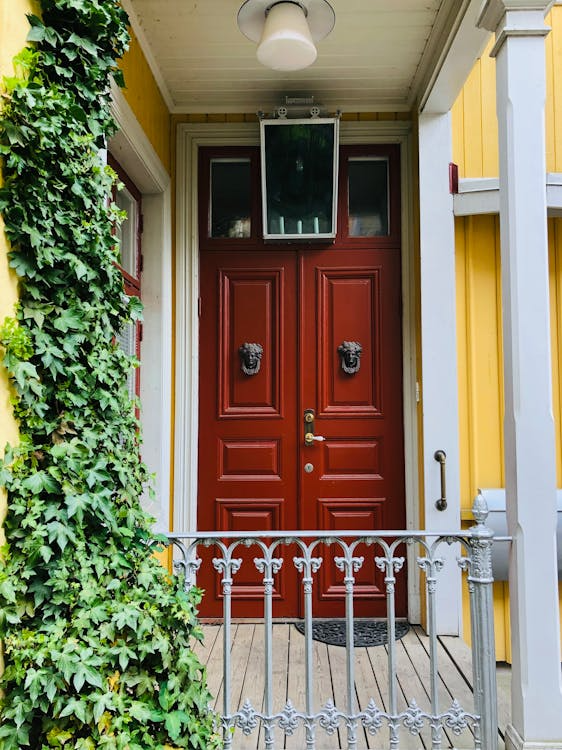
(Source)
Function is important, but so is how your residential entry door looks. Whether you want something sleek or classic, design options are endless. Let’s go over a few important things that you need to consider.
Panel Styles
Flat panels, raised panels, or glass inserts, each has its own charm. Raised panels give a traditional look, while flat panels lean modern.
Color and Finish
Bold colors can add character to your entryway. Neutral tones, on the other hand, blend easily with various home exteriors. Steel and fiberglass doors often come with factory finishes that resist fading.
Hardware Options
Doorknobs, knockers, and handle sets can enhance or distract. Choose finishes that match your house style. Brass gives a warm glow, while matte black feels sharp and contemporary.
How to Choose the Right 36×80 Exterior Door
Buying the wrong size can be a headache. Therefore, it is highly important that you choose the right exterior door. For that, there are a few things that you need to consider when choosing the residential entry door. Let’s break this down into easier chunks.
Match Your Climate
If you live in a wet or coastal area, fiberglass is your friend. In colder zones, insulated steel might be the best bet.
Align with Your Home Style
You wouldn’t put a rustic barn door on a sleek modern home. Make sure your door’s look suits your architecture. Clean lines for modern homes, maybe glass panels for mid-century styles, or detailed woodwork for cottage homes.
Think About Security
Steel and fiberglass doors often include reinforced cores and deadbolt-ready lock systems. According to the FBI’s Uniform Crime Report, over 56% of home break-ins happen through the front door. That alone makes security features worth a second glance.
Keep Maintenance in Mind
Choose something that fits your lifestyle. Busy household? Go with low-maintenance materials. Live in the woods? Watch for warping or pest damage with wood.
Don’t Forget Accessibility
The 36-inch width supports better accessibility. If you’re planning a forever home or thinking about aging in place, this matters.
Durability and Maintenance
You don’t buy a new door every year. So, whatever you choose needs to last. Wood needs sealing. Steel may dent, but it can be painted. Fiberglass is the lowest maintenance but may cost more upfront.
Whatever you choose, routine care will keep your 36×80 exterior door in top shape for years to come.
Cost Considerations
Budgets vary. But it helps to know what’s typical. According to Home Advisor, the average cost for a basic exterior door ranges between $546 and $2,374. Custom designs or premium materials can push that number.
Installation adds an extra $150 to $400, depending on your region and door type. It is vital to always check what’s included, such as hardware, frame, or installation, before deciding.
Common Mistakes to Avoid
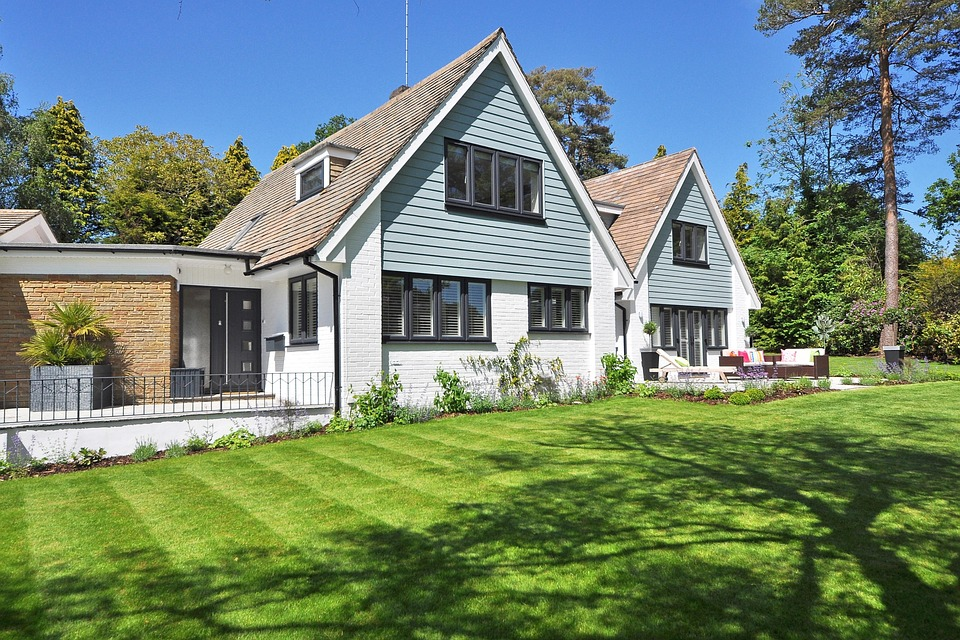
(Source)
Some homeowners buy based on looks alone. But skipping fit, security, or indoor scan basis. Here are a few traps to dodge:
- Not measuring properly. Always double-check your frame.
- Ignoring your local climate. It can affect how the door performs over time.
- Overlooking installation costs. A budget door can still break the bank once labor and hardware are added.
It is highly important that you avoid these issues when considering installing an exterior double door.
Summary and Takeaway
A 36×80 exterior door might sound like a small part of your house, but it does a lot of heavy lifting. It protects, welcomes, and saves you money if chosen wisely. It’s more than just a door; it’s part of your story. Pick one that fits your lifestyle, your weather, and your future.
It will ensure that your home is safe and secure while providing you with an amazing look. And if you want to get the best 36×80 exterior door for your home, then George Group is here to help you out.
George Group helps homeowners pick the perfect doors, whether for style, strength, or comfort. Contact George Group today to find your match.

